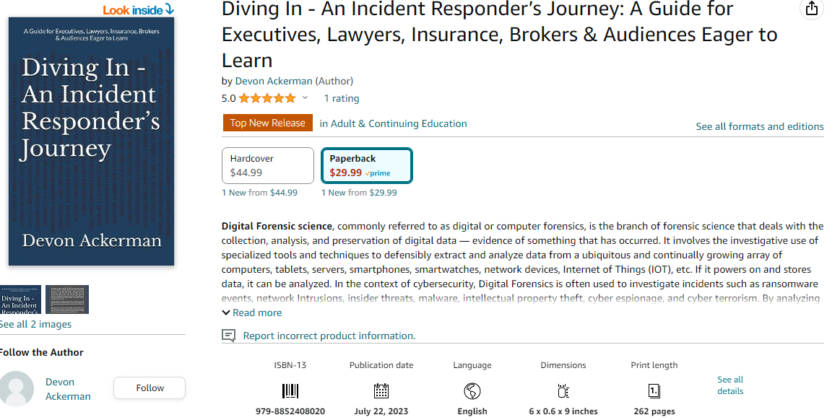Day 4 – Excerpt from Chapter 4 – User Causality in the context of DFIR
Day 4 - Excerpt from my newly released book, "Diving In - An Incident Responder’s Journey: A Guide for Executives, Lawyers, Insurance, Brokers & Audiences Eager to Learn" which you can get your copy here -> https://www.amazon.com/Diving-Responders-Executives-Insurance-Audiences/dp/B0CCCHTN8R "User causality in the context of Digital Forensics science refers to the relationship between a user's actions (cause) and the resulting impact on a digital system (effect) which fundamentally underpins Locard’s Exchange Principle. Understanding this cause-and-effect relationship is…

